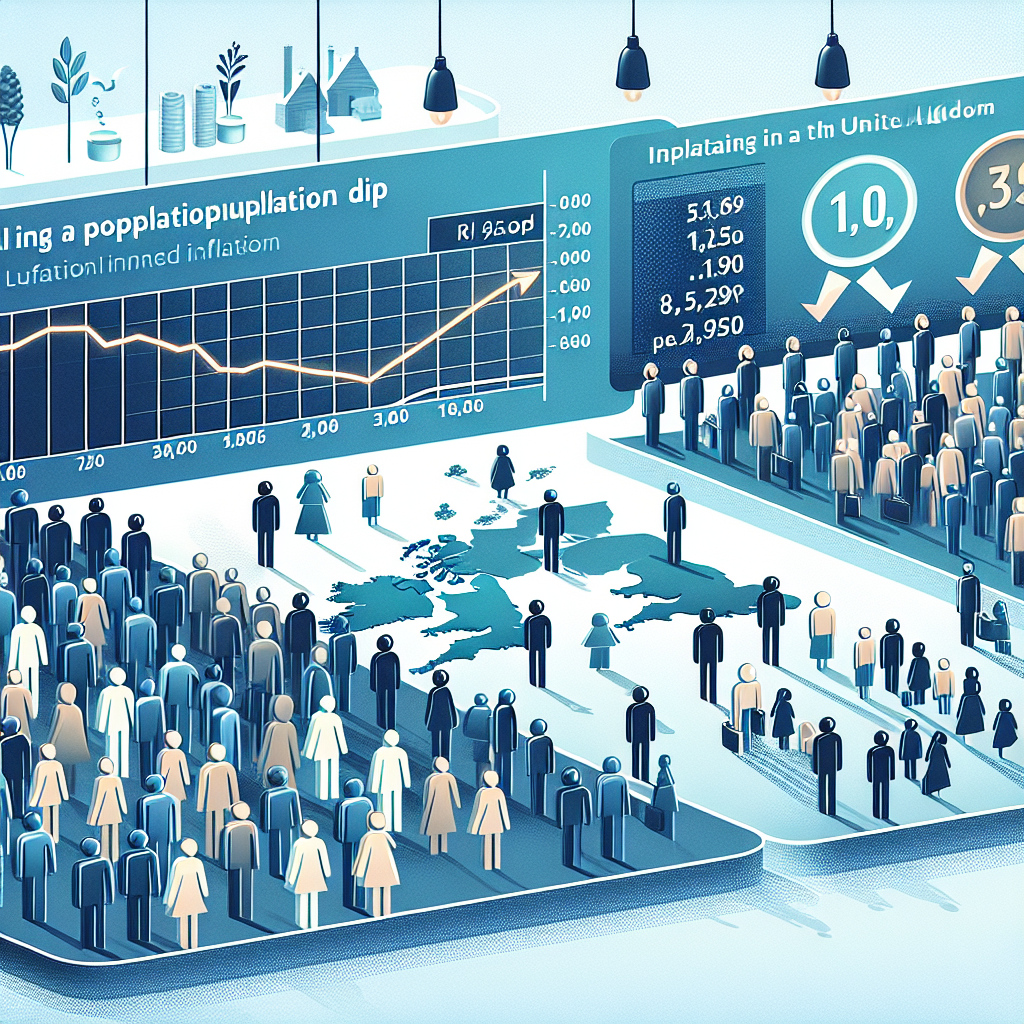The Impact of Declining Population in the UK on Inflation: A Growing Concern
Introduction
As the United Kingdom’s population continues to decline, significant economic implications arise, particularly concerning inflation. This blog post explores the connection between demographic changes and inflationary pressures, focusing on recent trends, statistics, and the broader economic landscape.
Understanding the Declining Population
In 2023, the birth rate in England and Wales dropped to a concerning low of 1.44 children per woman. This decline, compounded by fluctuating migration patterns, leads to an aging population and a tightening labor market (Source: Sky News, Migration Observatory). These demographic trends influence economic output, opportunities, and inflation rates.
The implications of a shrinking population are profound. With fewer young people entering the workforce, there is a growing concern about the sustainability of government spending and private sector growth. The shift towards an older demographic can also reshape consumer behavior, leading to significant variances in market demand and supply chain dynamics.
Key Findings on Inflation
-
Labor Market Constraints: As the population declines, the available workforce shrinks, leading to increased wages in specific sectors. This rise in wages can trigger inflation as businesses pass on costs to consumers (Source: McKinsey).
-
Changing Consumer Behavior: With fewer young earners entering the workforce, consumer spending is shifting. Older generations tend to prioritize healthcare and savings, potentially reducing demand for many goods and services. This alteration in consumer priorities can influence prices across various sectors (Source: ONS).
An overall increase in wages could lead to a wage-price spiral, fueling further inflation. Additionally, the shift in spending patterns may force businesses to rethink their strategies and offerings to cater to an aging consumer base.
- Public Spending Strain: An aging population means higher demand for public services like healthcare and pensions, leading to a larger financial burden on government resources. This could lead to increased taxes or public debt, both potential contributors to inflation (Source: UK Parliament).
With public services under strain, the government may be compelled to make tough fiscal decisions that could further impact inflation rates in the coming years. The interplay of demographics and public economics will be a critical area to watch.
Data Visualization
!Data Visualization: UK Population Trends and Inflation Rates
This visualization illustrates historical birth rates, labor force changes, and inflation rates over the past decade. (Insert actual link to a visual or create an infographic about this data)
Implications for Investors
Investors need to be aware of these demographic shifts, as changes in consumer behavior and labor market trends can affect various sectors. Industries focused on healthcare, retirement services, and essential products may see growth, while those reliant on young consumers might face challenges.
Understanding these trends helps investors align their strategies with market demands. Investment opportunities could arise in sectors that benefit from an increasing aging population, while potential risks might be concentrated in industries struggling to adapt to the shrinking labor force.
Social Media Updates
-
Tweet: 📉 The UK faces a population decline, with birth rates hitting a historic low. Discover how this impacts inflation and the economy in our latest blog! #UKEconomy #Inflation #Demographics
-
Facebook Post: As birth rates continue to drop, the implications for inflation in the UK are significant. Explore our analysis on how an aging population is reshaping consumer behavior and economic conditions. Read more here: Link to blog
-
LinkedIn Article Share: A falling birth rate in the UK signals alarming economic shifts ahead. Our latest insights delve into the effects on inflation and public spending. Essential reading for investors in today’s changing landscape! Link to blog
Conclusion
The declining population in the UK poses both challenges and opportunities for the economy. By understanding the relationship between demographics and inflation, stakeholders can navigate this evolving landscape effectively. Businesses and investors should adopt proactive strategies to mitigate risks while capitalizing on emerging trends.
Stay informed and adapt your strategies to be prepared for the implications of demographic changes on inflation. As the situation evolves, continue to monitor future reports and publications for further insights.
